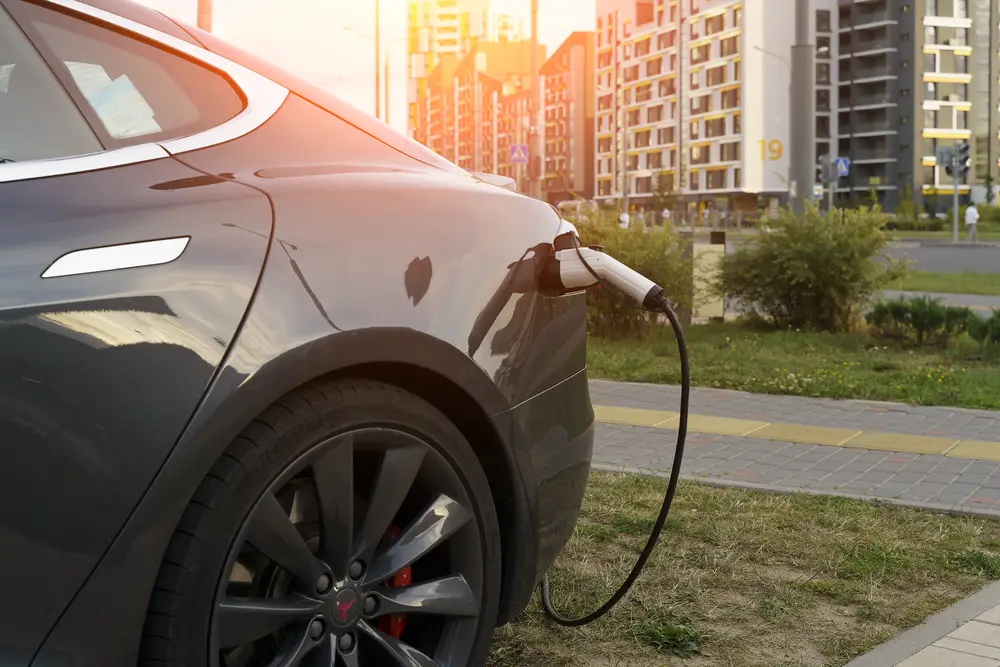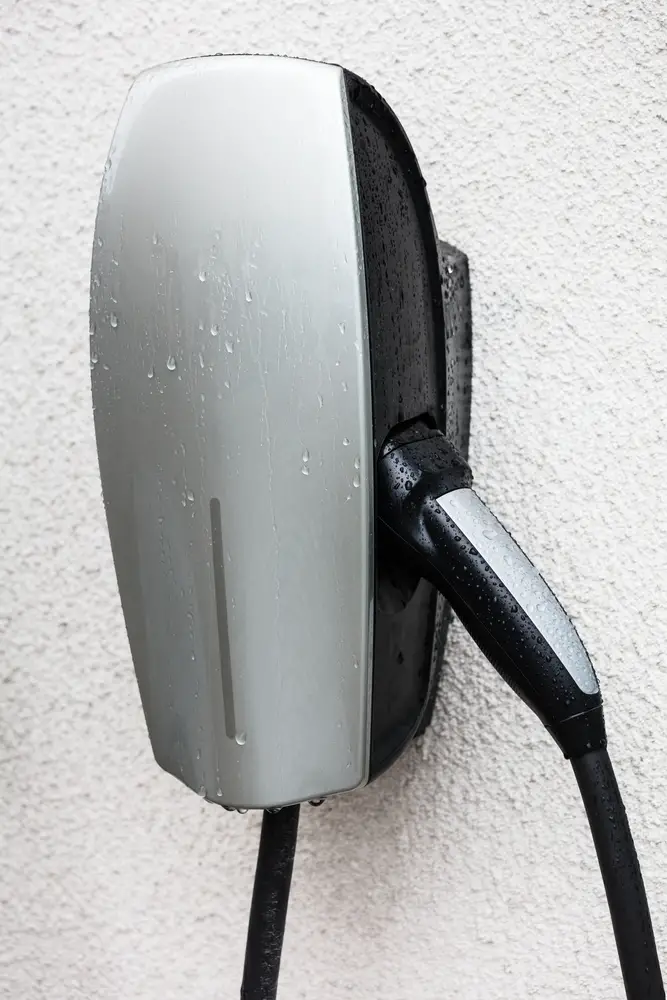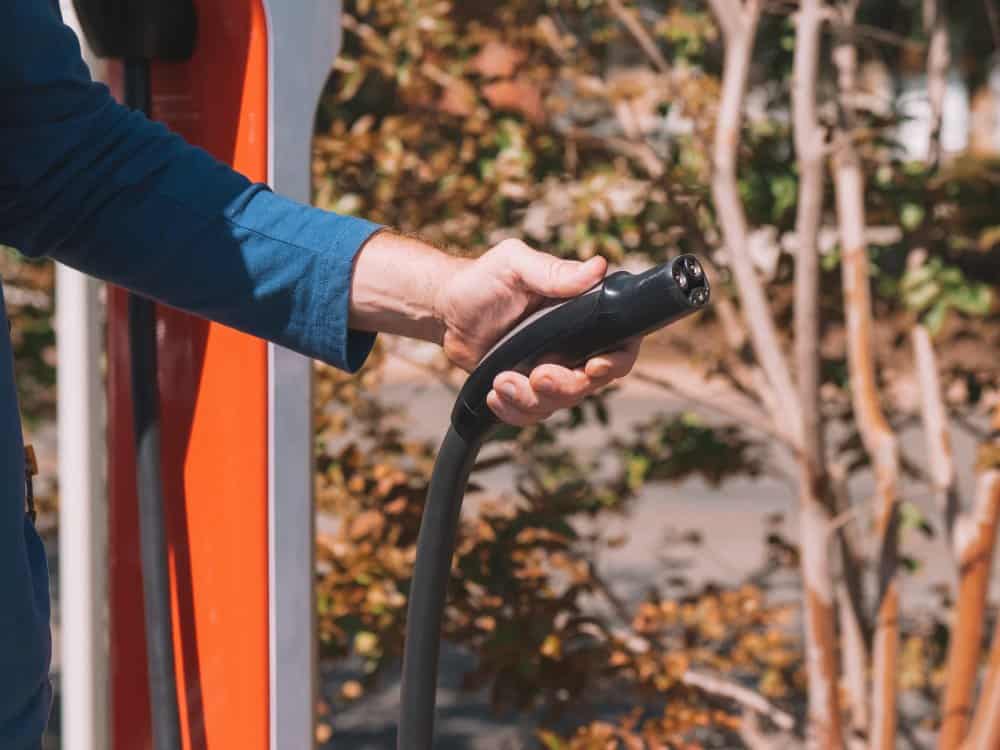Tesla owners enjoy the benefits of driving an electric vehicle, recharging their cars at home or at charging stations. A common concern among EV users is the durability and reliability of these charging solutions, especially in various weather conditions.
Quick Answer:
Tesla’s mobile charger, also known as the Mobile Connector, is built to withstand various weather conditions and is indeed water-resistant. However, it’s not technically “waterproof.” It can handle rain, snow, and minor splashes but shouldn’t be fully submerged in water.
When charging a Tesla vehicle, safety is always a priority.
By understanding the waterproof capabilities of Tesla’s mobile charger, owners can make informed decisions when choosing their charging setup. This ensures that vehicles are charged efficiently, safely, and without causing damage to the charger or the car.
Tesla Mobile Charger Overview
The Tesla Mobile Charger is a convenient and essential accessory for Tesla electric vehicle (EV) owners. It enables you to charge your Tesla anywhere there’s an electrical outlet, ensuring your EV is always ready for the road.
This mobile charger, officially known as the Tesla Mobile Connector, comes with your Tesla vehicle upon purchase, so there’s no need to buy a separate charger.
The Tesla Mobile Connector is designed to be easy to use and efficient. It is compatible with various adapters, allowing you to charge using different power sources, such as a standard wall outlet (110V) or a higher-voltage outlet (240V) for faster charging.
The Mobile Connector also features a charging speed of up to 32 miles of range per hour, depending on the power source and vehicle model.
When it comes to durability, the Tesla Mobile Charger is built to withstand a broad range of temperatures and weather conditions.
However, it is important to note that the charger is not specifically designed to be waterproof. To prevent damage, it is advisable to keep the charger away from direct contact with water or moisture, especially when charging your vehicle outdoors.
Waterproof and Weatherproof Features
Tesla’s mobile chargers come with a set of waterproof and weatherproof features to ensure that the charging process remains uninterrupted regardless of the weather conditions. These features are designed to not only protect the charger but also prioritize safety while using it outdoors.
To begin with, Tesla mobile chargers are water-resistant. This means they can withstand light rain and water splashes. However, being water-resistant is not the same thing as being waterproof.
In other words, while they can endure some exposure to water, it is strongly advised not to submerge them underwater completely.
The charger’s sealed design provides an extra layer of protection against water and dust. This sealing helps prevent moisture from entering the inner components and causing any short-circuiting or electrical damage. The charger’s casing material is built to withstand different weather conditions, which adds to its weather resistance.
In addition to these features, Tesla mobile chargers benefit from weatherproof connectors. These connectors are designed specifically to perform well under varying weather conditions, including rain or snow. This not only ensures a secure connection but also prevents potential corrosion due to moisture.
Keep in mind even though these chargers exhibit a level of water and weather resistance, it is still recommended to avoid exposing them to extreme weather conditions or direct water jets. Proper care and maintenance will go a long way in preserving the charger’s performance and longevity.
Charging in Various Weather Conditions
Tesla mobile chargers are designed to offer reliability and safety during the charging process. While they are not completely waterproof, they are built to handle various weather conditions.
In rainy weather, Tesla mobile chargers can still function effectively, as the charging port design keeps out most of the water. It’s important, however, to ensure that the charging cable and connectors are not submerged in water.
During a heavy rainstorm or thunderstorm, it’s advisable to take precautions and avoid charging if possible.
Snow and sleet can also impact the charging process. As snow accumulates, it can obstruct the charging port, making it difficult to insert the charging connector. Simply clearing the snow from the area should allow for proper charging. Additionally, slippery or icy conditions may present challenges when maneuvering the charger, so caution should be exercised.
In cases of wet conditions, Tesla mobile chargers have been designed to withstand moisture and perform well. However, it’s crucial to make sure the charger isn’t submerged in water or exposed to extremely damp conditions, as these factors may lead to electrical issues or malfunctions.
Electrical storms pose a more significant risk due to the potential for power surges that can damage the charger or the vehicle. In such circumstances, it’s best to wait until the storm subsides before attempting to charge your Tesla vehicle.
Outdoor Charging Safety Measures
When charging your Tesla outside, it is essential to consider a few safety measures to protect your vehicle and the charging equipment from potential water damage. While the Tesla mobile charger itself is not entirely waterproof, it is designed with some resistance to withstand typical outdoor conditions.
First and foremost, you should inspect the charge port and the charging port on your vehicle, and the charger. Ensure they are clean and free of dirt or debris that can cause a poor connection or water ingress.
Next, make sure to properly plug the charger into the vehicle’s charging port, creating a secure seal to prevent water entry.
Employing ground fault protection, such as a Ground Fault Circuit Interrupter (GFCI), is an excellent practice for added security against electrical hazards. This device helps to prevent faults in the electrical flow and minimize the potential for electrical fires, shocks, or electrocutions.
Another safety measure you can take when setting up outdoors is using NEMA 3R-rated enclosures or connectors. These enclosures provide adequate protection against rain, sleet, and ice formations on electrical devices and connections.
Additionally, pay close attention to the weather conditions before and during charging. Avoid charging during heavy rain, thunderstorms, or other severe weather conditions, as this can increase the risk of water damage or other hazards with electricity.
Electricity and Potential Hazards
Electricity and moisture generally don’t mix well together. When water comes into contact with electrical devices, it can result in a number of issues that can be both dangerous and damaging. In this section, we’ll discuss the potential hazards associated with using Tesla’s mobile charger in wet conditions.
Electrical shock is a risk when handling electrical devices around water. Moisture can act as a conductor, allowing electricity to flow through unintended pathways and potentially causing harm to those who come into contact with the device.
It’s important to use extra caution when charging your Tesla in a damp environment to avoid accidental shocks.
Short circuits can occur when moisture bridges electrical connections that aren’t designed to be in contact. This can cause damage to your charger, your vehicle’s charging system, or even the electrical supply itself.
Electrical issues within your Tesla’s charging system can arise due to the effects of moisture on the components. Corrosion and wear can occur when electrical parts are exposed to dampness over time, impacting the efficiency and reliability of your charger.
Regularly inspect your mobile charger for signs of wear and moisture damage to minimize the likelihood of electrical issues developing.
Lastly, fire hazards can arise from the combination of electricity and moisture. When moisture leads to a short circuit, it can generate sparks or heat that may ignite nearby flammable materials.
It’s essential to be conscious of your surroundings when charging your Tesla, particularly in wet conditions, to avoid potential fire risks.
Charging Connections and Compatibility
Tesla offers a range of charging options for their electric vehicles, such as Wall Connectors, Superchargers, and various adapters and connectors. Understanding their compatibility is essential to ensure safe and efficient charging for your Tesla vehicle.
The Wall Connector is a high-power home charging station designed for Tesla vehicles. It’s not waterproof, but it is weather-resistant and can handle various conditions. Ensure the installation location is compliant with local electrical codes, and it should be fine.
Superchargers are Tesla’s custom-designed ultra-fast charging network, allowing you to charge your Tesla on the go. Superchargers are built to withstand outdoor conditions, including rain and snow. They are usually placed near restaurants or shopping centers, allowing you to spend time while your vehicle charges.
For portable charging, Tesla provides a Mobile Connector (also known as the Tesla 3-pin charger) as an included accessory with your vehicle. This connector can plug directly into a standard 3-pin socket for charging.
The connector is weather-resistant, but it’s not waterproof, and it’s critical not to submerge it in water. Charging in extreme weather situations could lead to potential safety hazards.
Tesla also offers various adapters and connectors, enabling you to charge your vehicle at different types of charging stations or outlets. Some common adapters include the J1772 adapter for charging at Level 2 public charging stations and the CHAdeMO adapter for fast DC charging at compatible stations.
Be cautious when dealing with adapters and connectors, as they may not be waterproof or weather-resistant.
The use of extension cords or extensions is generally not recommended for charging your Tesla. Extension cords might not be designed to handle the high current needed for charging an electric vehicle safely.
In case it’s necessary to use an extension cord, ensure it’s suitable for outdoor use and rated for the required amperage.
Charging Speeds and Range
When it comes to charging your Tesla electric vehicle, understanding the charging speed and the range it provides is essential. Generally, the charging speed refers to the rate at which an EV’s battery can gain power.
It is usually measured in kilowatts (kW) and affects the total time needed to fully charge your electric car. The range, on the other hand, refers to the distance an electric vehicle can travel on a single charge. This is largely determined by the battery’s capacity and energy efficiency.
Tesla offers multiple charging options, including the Tesla mobile charger. The mobile charger is designed for charging on-the-go and offers a convenient solution for Tesla drivers who need a quick top-up during their journey. However, let’s dive deeper into its capabilities.
The charging speed of a Tesla mobile charger is lower compared to Tesla Superchargers. While a Supercharger can deliver up to 250 kW, the mobile charger provides 3 kW to 11 kW, depending on the specific model and the power output of the wall socket.
This difference in charging speed means that using a mobile charger will take longer to charge your Tesla fully. To give you an idea, charging a Tesla Model 3 with a long-range battery using a mobile charger may take anywhere from 5 to 30 hours. In contrast, a Supercharger can significantly reduce this time to about half an hour.
As for the range, it is affected by various factors, such as temperature, driving conditions, and battery age. On average, Tesla vehicles can reach between 250 to 370 miles (402 to 595 kilometers) depending on the model and battery capacity.
Charging your Tesla for a few hours with a mobile charger can provide enough range to continue your journey comfortably. However, it is always recommended to plan ahead and optimize your charging stops using the in-car navigation system, which helps find the most convenient fast-charging locations along the route.
Specific Tesla Models and Chargers
When it comes to Tesla mobile chargers, understanding their compatibility and features for specific Tesla models is crucial.
The Tesla Model 3 and Tesla Model S both come with the Tesla Gen 2 Mobile Connector, which is a versatile and portable charging solution. The connector has a maximum output of 32 amps, allowing for an approximate charging rate of 30 miles of range per hour for the Model 3 and 23 miles of range per hour for the Model S.
The Tesla Gen 2 Mobile Connector is not waterproof, but it is designed to withstand various weather conditions, including rain and snow. However, Tesla recommends that you avoid submerging the charger in water or using it in standing water.
In addition to the Gen 2 Mobile Connector, Tesla owners can also opt for the Tesla Wall Connector. This charger is designed for home installation and offers faster charging speeds, with up to 44 miles of range per hour for the Model 3 and up to 34 miles of range per hour for the Model S.
The Wall Connector is hardwired and has a weatherproof NEMA 3R enclosure, which makes it suitable for both indoor and outdoor installation.
The Wall Connector is more suitable for locations where you’d like to have a dedicated charging station instead of plugging and unplugging the mobile connector every time. It is important to have a licensed electrician install the Wall Connector according to Tesla’s guidelines.





